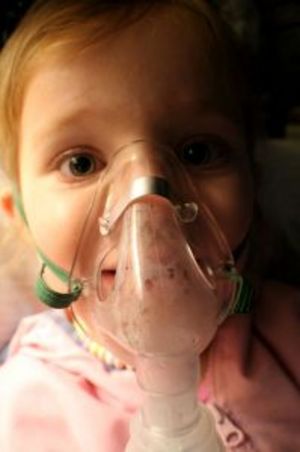Every year, almost 27,000 adults and in excess of 2,000 children in the United States are diagnosed with leukemia. Leukemia is a form of cancer. Cancer comes in the form of 100 different diseases that all carry two common characteristics. The first characteristic is that certain cells in the body become abnormal, and the second characteristic is that the body constantly produces these abnormal cells. Leukemia is specifically a cancer of the blood cells. It originates in the bone marrow. When leukemia develops, the body produces abnormally large amounts of white blood cells that look different from normal blood cells, and do not work correctly.
There are many types of leukemia, and they are grouped as being either acute or chronic, by how quickly the disease develops or worsens, and the type of blood cell that is weakened. In acute types of leukemia, the disease gets worse quickly, while in chronic leukemia, the disease gets worse gradually. Leukemia can occur in both types of white blood cells, lymphoid or myeloid cells. When it is the lymphoid cells that are targeted, it is termed lymphocytic leukemia. When the myeloid cells are targeted, it is referred to as myelogenous leukemia.
The most common form of leukemia in adults is called acute myelogenous leukemia, or AML, and also can affect children. This type is also referred to as nonlymphocytic leukemia, or ANLL. AML is not inherited, and it is not contagious. The causes of AML are not known, but studies show that cigarette smoking, benzene exposure, and chemotherapy drugs may be factors. The characteristics of AML are uncontrolled growing and accumulation of cells called “leukemic blasts,” which do not act like normal blood cells, and the blocked production of marrow cells. About 10,100 cases of AML are reported every year, mainly in adults. The chances of developing AML increase ten to one between the ages of 30 and 70 years old.
Acute lymphocytic leukemia, or ALL, is the most common type of leukemia in young children. It can also affect adults, mainly over 65 years old, but primarily is seen in children under 10. As an acute type of leukemia, ALL progresses quickly. It is not inherited, but has been linked to radiation doses and exposure to toxins before birth or at an early age. Approximately 4,000 cases are diagnosed every year in the United States.
Chronic myelogenous leukemia, or CML, is a fairly uncommon form of leukemia that is found primarily in adults. CML is technically not inherited, but it is related to the genetic code. Overproduction of white blood cells is linked to the chromosome in the genetic structure called the Philadelphia chromosome in bone marrow cells. About 5,000 cases of CML are diagnosed every year in the United States. Chemotherapy will send CML into remission, but the only known cure, at this point, is stem cell transplants.
Chronic lymphocytic leukemia, or CLL, is generally found in adults over the age of 55. It never affects children, but is rarely found in younger adults. CLL is the most common form of older adult leukemia. Over 75% of its cases are diagnosed after the age of 60. This type of leukemia progresses at such a slow rate, that there usually is not enough time for treatment once symptoms are evident. About 7000 cases are diagnosed every year, and there is currently no cure.
Since leukemia affects different parts of the blood, there are various different symptoms. People that are anemic, meaning that they don’t have enough red blood cells, usually begin by being constantly tired, short of breath, or pale. A person that does not have enough white blood cells may develop infections more easily, have a mild fever, or have pain in the bones or joints. Finally, a patient with a low platelet count will bleed easily, develop bruising easily, or may have a very tough time healing cuts or wounds. Sometimes, people have no symptoms and just find out during a blood test.
Diagnosis is done in a few ways. A doctor will first inquire about the patient’s medical history and do a physical. The doctor will then check for swelling in the liver, swelling in the spleen, lymph nodes, groin, and in the neck. Blood tests are helpful because they show the nature of the cells, and let the doctor look at them in person. They do not always determine the type of leukemia though. To determine the exact type of leukemia, a hematologist, oncologist, or pathologist has to examine bone marrow from the patient under a microscope. The marrow is drawn using a needle that is inserted into a large bone, usually the hip, and removing a small bit of liquid marrow. This is called a bone marrow aspiration. To find out the extent of the disease, a doctor may order a spinal tap to check for leukemia in the fluid around the brain and spinal cord, or chest x-rays can show disease in the chest.
Treatment for leukemia depends on many things. A patients age, symptoms, overall health, extent of the disease, whether the disease has been treated before, and the specific features of the cells can all weigh on the decision. Acute leukemia patients need to be treated immediately. Their treatment is focused on remission, or the killing of the cancer cells. Many forms of acute leukemia can be cured. Chronic leukemia patients don’t necessarily need immediate treatment. They need to check in with their doctor regularly, but they don’t need treatment until the disease shows symptoms. Chronic leukemia rarely can be cured.
Most leukemia patients are treated with chemotherapy. Chemotherapy is defined as the use of drugs to kill cancer cells. It depends on the type of cancer, but patients can be given one drug, or a combination of two drugs to kill the cancer. Some are given orally, but most are intravenously injected (IV) or given by catheter. Chemotherapy is given in cycles; treatment cycle, then recovery cycle.
Sometimes, radiation therapy is used with chemotherapy for leukemia. Radiation is defined as using high-energy rays to damage cancer cells and stop them from growing. Radiation therapy can be directed at one part of the body for specific cases, or the entire body (called total-body irradiation) which is usually done before a bone marrow transplant.
Bone marrow transplants are done on some patients to replace the cancerous marrow that is killed during radiation. This marrow can come from a donor, or form the patient’s own body that has been drawn out prior to the radiation treatment. Transplant patients are usually kept in the hospital for several weeks after the treatment to protect against infection.
Success rates have risen dramatically over the years. Now, about 80 percent of children with ALL are cured. About 40 percent of children with AML are cured, and just a little less for adults. Chronic cases opf leukemia are still very tough to see any curing, but the survival period has risen from about three years to six years. In any case, many foundations such as St. Jude Hospital, have been working for years to find a cure to this and other cancers. Scientists have made huge strides in the fight against leukemia, and will continue until they find a cure.




